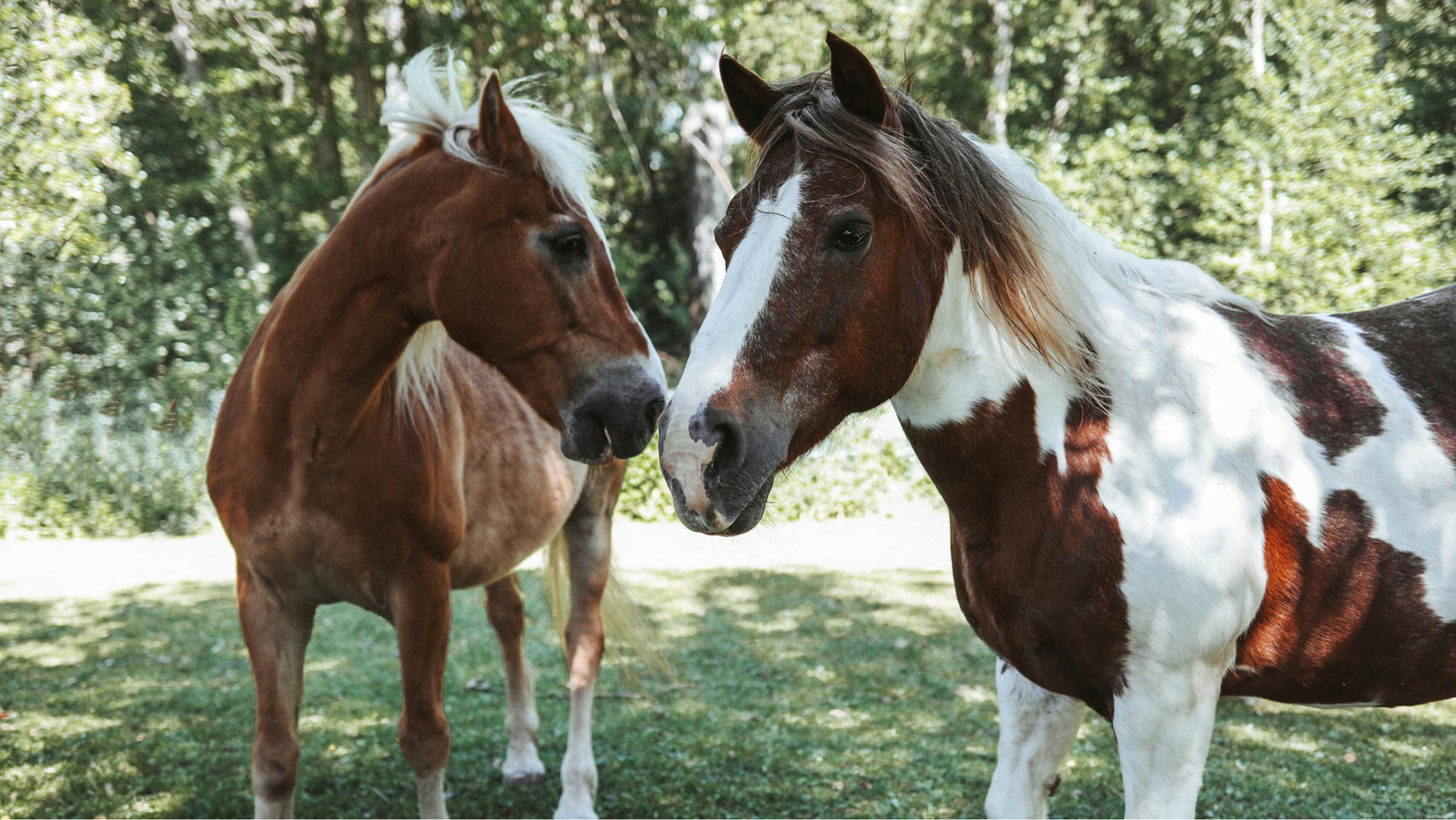
Osteoarthritis
If your horse is difficult to motivate to move, it may be suffering from osteoarthritis. This is certainly a shock at first, as the chronic joint disease cannot be cured and can further restrict your horse's mobility over time. However, modern treatment often allows affected animals to maintain a good quality of life for a long time. In addition to early diagnosis, the right therapeutic measures are crucial for this.
A tip in advance: If you notice anything unusual about your horse's movements, you should visit your vet as soon as possible. This pays off in the case of osteoarthritis!

DEFINITION
What is osteoarthritis?
Osteoarthritis is a chronic joint disease that cannot be cured. The tricky thing about it is that it progresses gradually. Your horse may have become lazier or sometimes takes longer to warm up. The onset is often subtle and this is exactly what makes it more difficult to recognize the first warning signs.
What exactly happens with osteoarthritis? In a healthy joint, movement between the cartilage layers at the ends of the bones is easy and smooth. In osteoarthritis, the joint cartilage, which covers the ends of the bones and acts as a shock absorber, is increasingly destroyed. The lack of buffering causes the joint to become inflamed and the bone beneath the cartilage to be attacked. The reaction is bone formation, which can cause the joint to become increasingly stiff.
A diseased single joint can affect all parts of the musculoskeletal system, such as ligaments, tendons and muscles. This happens especially when your horse adopts relieving postures due to pain and the affected joint is not loaded or is only loaded on one side. Not only can this lead to incorrect and excessive strain on other joints, but it also damages the diseased joint itself: As the joint cartilage functions like a sponge, it is no longer adequately supplied with nutrients due to the lack of movement. This further damages the tissue and accelerates the destruction of the cartilage - a vicious circle. And so, unfortunately, osteoarthritis is often only noticed when a large part of the joint cartilage has already been irrevocably destroyed.
SYMPTOMS
How do I recognize osteoarthritis?
The degenerative joint disease is characterized by:
- Severe pain in some cases, especially during movement.
- Movement disturbances such as lameness and a blunt and/or unsteady gait.
- Start-up pain: When the horse starts to move after standing for a long time, it is initially quite lame. The lameness subsides after a short period of movement.
- Swelling in the area of the affected joint.
CAUSES
How does osteoarthritis develop?
Osteoarthritis is often caused by:
- Joint inflammation that has not healed
- Injuries to the joints
- Overloading and incorrect loading
- Overly intensive workload and insufficient warming up
- Feed-related deficiencies in the nutrient supply, too few minerals and trace elements
- Congenital deformities of the legs or hooves
However, joint wear and tear can also occur as a normal sign of ageing.

DIAGNOSIS
How osteoarthritis is diagnosed
If symptoms typical of osteoarthritis occur, you should have your horse seen by your veterinarian. This is because a thorough examination of the general condition and the identification of specific symptoms and risk factors, such as obesity, are essential.
During the examination, the joints, tendons and ligaments are thoroughly palpated in order to assess their condition and detect any swelling. A detailed lameness examination is also necessary for a reliable diagnosis: Pre-trotting on soft and hard surfaces as well as flexion tests, both at a walk and trot, reveal which joints are affected by the degenerative disease.
With the help of diagnostic anesthesia, in which individual areas of the horse's leg are systematically anesthetized locally, the affected joint zone can also be narrowed down quite well. Further examination methods such as blood tests or imaging procedures such as X-rays, ultrasound or magnetic resonance imaging are suitable for better assessing the extent of the changes. An invasive examination method is also available in the form of arthroscopy.
TREATMENT
How is osteoarthritis treated?
Due to the permanent destruction of the joint cartilage, treatment usually has to be lifelong. The good news is that with early treatment, you can usually slow down the progression of the disease and thus have a positive influence. Further joint damage can be delayed and consequential damage can be avoided.
Various aspects should be taken into account during treatment:
- Sufficient exercise
- Avoidance of unnecessary strain on the joints (e.g. by reducing weight if overweight)
- Supplementary feed for support
- Physiotherapeutic support
Components of multimodal osteoarthritis therapy

Pain treatment is also an important part of the therapy and should be started as soon as the diagnosis is made. In addition, the administration of veterinary drugs with regenerative effects on the joint cartilage is recommended as a long-term therapy. The combination of different therapy methods can lead to more mobility and have a positive influence on the course of the disease.
Heel Vet
If you want to support your horse, consider the natural veterinary medicines from Heel Vet.
PREVENTION
How can I prevent osteoarthritis?
Prevention is better than cure, and this is particularly true of osteoarthritis. Because it is often caused by previous injuries to the musculoskeletal system, it is important that these always heal properly. Here too, it is better to consult your veterinarian too often than not enough.
What you can also do to keep your horse's joints healthy and resilient for as long as possible:
- Allow plenty of free, natural movement
- Consistently adhere to the warm-up phase during training
- Ensure a balanced diet that meets their needs (reduce excess weight if necessary)
It is best to coordinate your training plan and intensity as well as an optimized diet with your veterinarian.


